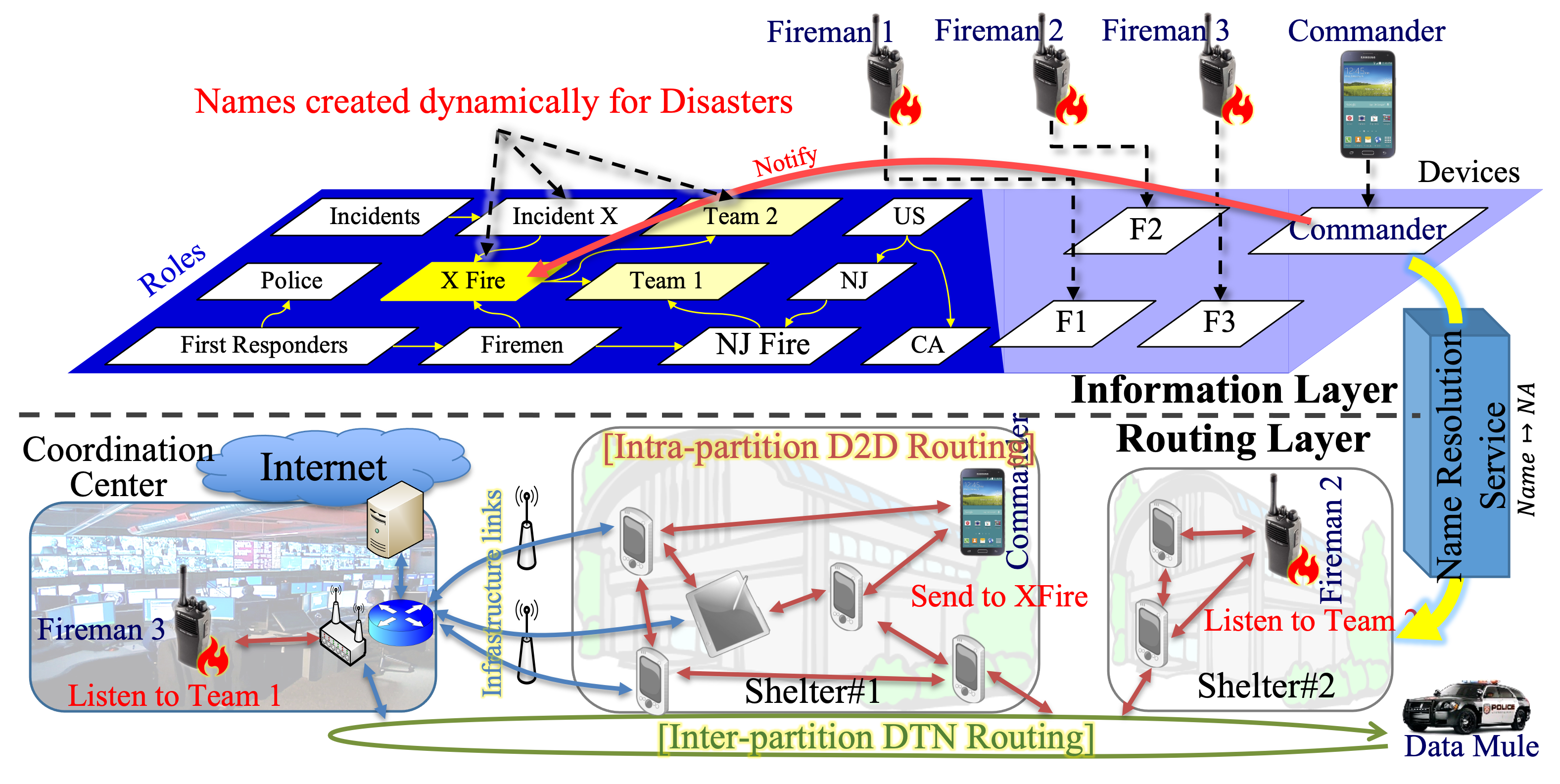Information Centric Networking (ICN) is a new paradigm where the network provides users with named content,
instead of communication channels between hosts.
Research on ICN is at an early stage, with many key issues still open, including naming, routing,
resource control, security, privacy and a migration path from the current Internet.
Also missing for efficient information dissemination is seamless support of content-based publish/subscribe.
Further, and importantly, current proposals do not sufficiently address energy efficiency.
GreenICN aims to bridge this gap, addressing how the ICN network and devices can operate in a highly scalable and energy-efficient way.
The project exploits the designed infrastructure to support two exemplary application scenarios:
- The aftermath of a disaster e.g. hurricane or tsunami, when energy and communication resources are at a premium and it is critical to efficiently distribute disaster notification and critical rescue information.
Key to this is the ability to exploit fragmented networks with only intermittent connectivity;
- Scalable, efficient pub/sub video delivery, a key requirement in both normal and disaster situations.
GreenICN also exposes a functionality-rich API to spur the creation of new applications and services to drive EU and Japanese industry and consumers into ICN adoption.
Our team comprising researchers with diverse expertise, system and network equipment manufacturers, device vendors, a startup,
and mobile telecommunications operators, is very well positioned to design, prototype and deploy GreenICN technology,
and validate usability and performance of real-world GreenICN applications, contributing to create a new, low-energy, Information-Centric Internet.
Our expertise and experience in standardization enables us to make major contributions to standards bodies.
Our efforts foster continued close cooperation between both industrial and research communities of Europe and Japan.
This project includes 6 EU partners (University of Göttingen, NEC Europe, CEDEO, Telekomunikacja Polska, University College London, and CNIT)
and 6 Japan partners (KDDI, NEC Japan, Panasonic, University of TOkyo, Waseda University, and Osaka University).
The EU teams received a €3M grant from EU-Japan FP7 ICTs program for GreenICN.
Please visit our
project website
for more information.

